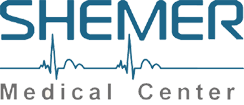Sports Medicine In Israel
|
Sports medicine is also dealing with the preventive treatment of overuse injuries, consultation for complex training programs including graduated exertion and nutritional planning, and rehabilitation of sports injuries. Medical Problems
The majority of patients who come to the Unit for treatment suffer from acute injuries or trauma caused by overuse of the knee as well as injuries to other joints including the ankle, shoulder, and elbow. Patients are often treated in cooperation with several professionals. The problems dealt with by the Unit's physicians include among others: meniscus tears (the meniscus is a half moon shaped piece of cartilage; there are two menisci in a normal knee); knee instability due to tears of the crutiate or collateral (side) ligaments; instability or dislocation of the pica; deterioration and injury to the knee cartilage; patella femoral syndrome and more. Treatment Methods
The services provided by the Unit include: arthroscopic surgical procedures (Day Care Hospitalization) and surgical procedures requiring inpatient hospitalization. The decision to perform surgery as a day care patient or inpatient is related to the extent of the intervention required as well as other secondary factors such as medical problems of the patient. In general, patients want to return to full activity and we attempt to avoid hospitalization or limit it as much as possible. Most procedures are performed using an arthroscope, a fiber optic scope which is introduced into a joint space through a small incision in order to carry out diagnostic and treatment procedures within the joint. The arthroscope is fitted with a miniature camera, a light source and precision tools at the end of flexible tubes and can be used not only for diagnostic procedures but also to repair a wide range of problems, such as cartilage and meniscus damage etc. More complicated surgical procedures generally requiring a hospital stay include: reconstruction of knee ligaments; treatment of problems of the patella femoral joint (located between the knee cap and the hip bone); osteotomy; and treatment of damaged cartilage in the knee and ankle by re-inserting intact cartilage and bone from the patient's own body into the damaged area (O.A.T.S.). |

 Injuries of the skeleton, joints, spinal column, muscles, bones and nerves.
Injuries of the skeleton, joints, spinal column, muscles, bones and nerves.